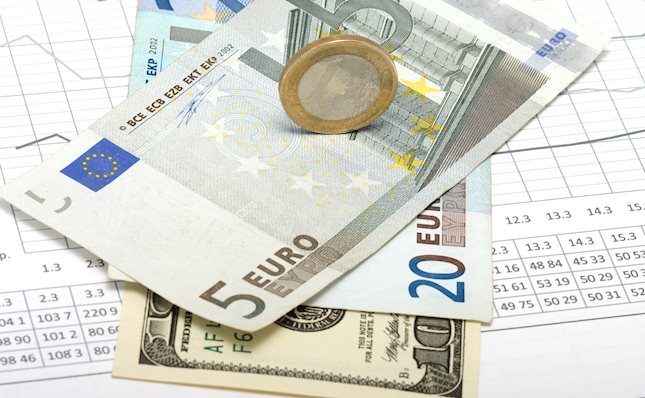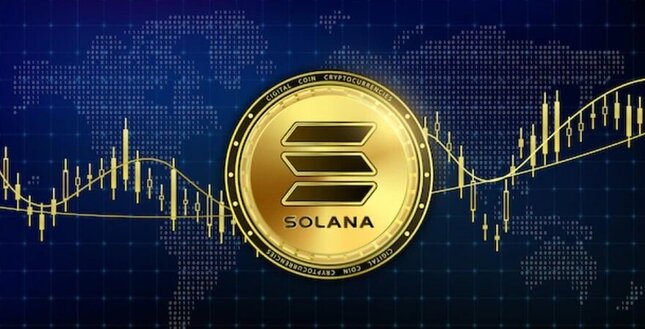Markets
Stocks and bonds saw a widespread decline across global markets today as robust economic indicators reignited concerns about inflation and led to speculation that major central banks might maintain higher interest rates for an extended period. The fear of prolonged monetary tightening was further fueled by ongoing supply chain disruptions, including incidents in the Red Sea and the recent shutdown of the Baltimore Port, coupled with a gradual uptick in oil prices.
The Federal Reserve's reiterated stance of patience regarding rate cuts has set the tone for the second quarter, ushering in the familiar "good news is bad news" dynamic. This sentiment was underscored by better-than-expected US job openings and factory goods orders data, which raised doubts about the timing and extent of Federal Reserve easing measures.
Inflation's psychological component can indeed lead to self-fulfilling expectations. Policymakers work to anchor consumers' outlook on price growth, aiming to prevent runaway inflationary pressures. However, recent efforts to stabilize and guide consumer expectations on inflation have faced challenges, as expectations have not aligned with policymakers' objectives.
Traders, now anticipating fewer rate cuts than the Fed itself, responded by pushing 10-year yields to their highest levels in 2024. This divergence in market expectations from those of the central bank weighed heavily on equities, which had largely disregarded previous adjustments in central bank rate forecasts during a robust rally in recent months.
The U.S. economy has churned out a strong and steady run of uninterrupted growth prints. So now folks are all suddenly realizing growth is flying to high over expectations for the Fed to cut rates.
But there seems to be a cause for concern across the board, regardless of one's stance on the infalation / stagflation dial.The recent surge in oil prices, a huge market mover lately, could be seen as a warning sign of stagflationary pressures looming on the horizon. Regardless of the analytical approach taken, the overall picture suggests conditions ripe for a potential market correction.
The prevailing caution in the market has been heightened by a noticeable divergence among the esteemed "Magnificent 7," reaching unprecedented levels. This serves as a stark reminder of the risks associated with elevated valuations and the potential challenges when following the leader becomes less straightforward.
On the bullish side of the spectrum, Nvidia (NVDA) has demonstrated an impressive year-to-date return, driven by strong performance in its Q4 earnings and sustained investor confidence in its AI capabilities. Conversely, Tesla (TSLA) , the albatross,finds itself facing headwinds and uncertainties, leading to underperformance compared to its peers.
Among the remaining members of the "Magnificent 7," including Amazon, Meta (formerly Facebook), Microsoft, and Nvidia, there have been notable successes. However, Alphabet (Google), Apple, and Tesla,weighing down the overall performance of the group.
With the "Magnificent 7" effectively reduced to the "Magnificent 4" in terms of positive momentum, it's challenging to maintain a bullish outlook, especially considering the significant influence each of these stocks holds within the broader index.
As sturdy economic growth and relentless equity market gains continued uninterrupted up to that point, optimism among investors on Main Street reached levels that historically signal caution. According to the Conference Board's March survey, the proportion of respondents anticipating higher stock prices over the next 12 months surged to its second-highest level on record, surpassed only by the levels seen in January 2018. Concurrently, bearish sentiment has all but vanished.
Interestingly, historical precedent suggests that such overwhelmingly bullish sentiment can sometimes foreshadow market corrections. For instance, following the peak optimism seen in early 2018, the S&P 500 corrected by 17% throughout that year. Similarly, among financial advisors surveyed in the Investors' Intelligence Survey, the ratio of bulls to bears has exceeded 4-to-1, a level rarely observed and often indicative of impending market corrections.
At the individual level, the ratio of bulls-to-bears in the AAII survey had also reached the highest levels seen in the past decade. In all cases, a significant portion of respondents are bullish, with a near absence of bearish sentiment. This trend is understandable given the nearly uninterrupted gains in the market and the disappearance of volatility. While this doesn't necessarily guarantee a huge market correction, it does suggest that bad in the form of good news would harder to swallow, In this scenario, the adage "Good News Is Bad News" seems apt.
Oil markets
Oil futures rallied on supply worries driven by geopolitical tensions, with separate attacks in Russia and the Middle East raising concerns about global oil supply. This surge in oil prices followed data indicating emerging manufacturing activity in both the United States and China after a prolonged slowdown.
The market reacted strongly to a Ukrainian drone attack on an oil refinery deep inside Russia, renewing concerns that Kyiv might target Russian energy infrastructure as it did in March. Despite calls from the United States for Ukraine to avoid such actions, the attack underscores the vulnerability of Russian energy assets beyond the immediate conflict zone in Ukraine.
While Russia may shift its focus to exporting more crude oil rather than refined products, the incident highlights the broader risks associated with geopolitical tensions in key energy-producing regions.
The Energy Information Administration forecasts a 900,000-barrels-per-day drawdown from global oil inventory in the second quarter, driven by production restraint measures by OPEC+ aimed at supporting higher oil prices. OPEC+ has extended voluntary production cuts of 2.2 million barrels per day through June 30, tightening the global oil market balance. The Joint Ministerial Monitoring Committee for OPEC+ is set to meet on Wednesday to assess market conditions, although no recommendations to adjust production quotas are anticipated until the OPEC+ biannual meeting scheduled for June 1.
On the demand side, there was a positive development following on the US macro front which tends to be bullish for oil prices.
SPI Asset Management provides forex, commodities, and global indices analysis, in a timely and accurate fashion on major economic trends, technical analysis, and worldwide events that impact different asset classes and investors.
Our publications are for general information purposes only. It is not investment advice or a solicitation to buy or sell securities.
Opinions are the authors — not necessarily SPI Asset Management its officers or directors. Leveraged trading is high risk and not suitable for all. Losses can exceed investments.
Recommended Content
Editors’ Picks

EUR/USD stabilizes around 1.2550 after hitting two-year lows
EUR/USD plunged to 1.0223, its lowest in over two years, as risk aversion fueled demand for the US Dollar. Thin post-holiday trading exacerbated the movements, with financial markets slowly returning to normal.

USD/JPY flirts with multi-month highs in the 158.00 region
The USD/JPY pair traded as high as 157.84 on Thursday, nearing the December multi-month high of 158.07. Additional gains are on the docket amid prevalent risk aversion.

Gold retains the $2,650 level as Asian traders reach their desks
Gold gathered recovery momentum and hit a two-week-high at $2,660 in the American session on Thursday. The precious metal benefits from the sour market mood and looks poised to extend its advance ahead of the weekly close.

These 5 altcoins are rallying ahead of $16 billion FTX creditor payout
FTX begins creditor payouts on January 3, in agreement with BitGo and Kraken, per an official announcement. Bonk, Fantom, Jupiter, Raydium and Solana are rallying on Thursday, before FTX repayment begins.

Three Fundamentals: Year-end flows, Jobless Claims and ISM Manufacturing PMI stand out Premium
Money managers may adjust their portfolios ahead of the year-end. Weekly US Jobless Claims serve as the first meaningful release in 2025. The ISM Manufacturing PMI provides an initial indication ahead of Nonfarm Payrolls.

Best Forex Brokers with Low Spreads
VERIFIED Low spreads are crucial for reducing trading costs. Explore top Forex brokers offering competitive spreads and high leverage. Compare options for EUR/USD, GBP/USD, USD/JPY, and Gold.